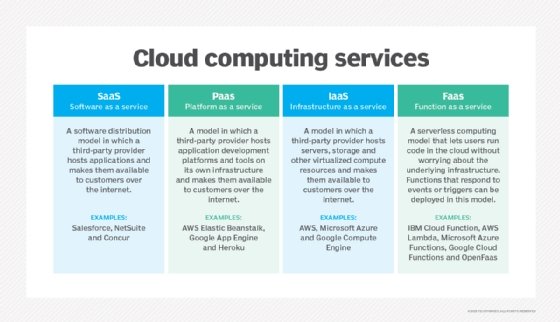
alex_aldo - Fotolia
Simplify SaaS integration with an IT service aggregator
SaaS management can cause as many headaches as SaaS apps prevent. Poor integrations between disparate tools can create bottlenecks and failures, but aggregators can help.
SaaS eliminates the need for IT teams to manage hosting hardware or update and test software releases, as the SaaS provider performs these tasks.
As SaaS availability grows, businesses can move everything from email communications to file storage to IT monitoring and management onto SaaS offerings. Challenges arise, however, when enterprises use multiple SaaS applications hosted by different providers -- especially if those applications must integrate to support a business workflow.
An IT service aggregator can help, but be sure to choose one wisely. You'll need a partner who acts as the go-between with your productivity workers on one end and disparate SaaS tools on the other. They require much the same vetting process as a cloud vendor. Service aggregators do more than link one process to another, and none of them work for free.
SaaS integration options and challenges
This typical example highlights the various paths a company can go down to integrate SaaS applications.
The business in this example has few, if any, highly technical IT staff. In an attempt to eliminate superfluous IT equipment, it has no on-site servers, no local storage beyond what's in its PCs and minimal networking hardware. The company needs to integrate the various SaaS systems it relies on for day-to-day productivity -- but has no IT environment in which that integration can occur.

The organization has a couple of options. The first is to perform the SaaS integrations on a cloud platform, such as AWS, Microsoft Azure or Google Cloud Platform. This is a solid option, as long as the IT team has the required skills to not only perform the SaaS integrations, but also to maintain them as the applications' vendors update and change features.
Since this company lacks an adequate in-house IT support group, it should keep looking. It could find a single SaaS vendor that offers all the functionality it needs for most business workflows, as well as integration services. Such SaaS providers, however, are rare -- and, even if they were relatively common, they pose vendor lock-in risks, including what happens when the vendor experiences an outage.
The third and best option is to work with a service aggregator. These IT providers sometimes offer a SaaS product, though not necessarily. They do, however, need a software integration platform, as it's their responsibility to perform SaaS integrations on an enterprise's behalf and manage those integrations as the SaaS apps change and evolve.
What to look for in a service aggregator
SaaS aggregators should have both technical skills, such as coding and software maintenance, and business skills. Take steps to ensure a vendor is the right partner for your organization -- before you sign a contract.
Partnerships with SaaS toolmakers. Evaluate the relationship between the aggregator and the SaaS providers you use. Preferably, that relationship is close enough that the provider forewarns the aggregator of application updates and changes so they can prepare and minimize disruption to the business workflow. Partnership communication helps the aggregator plan ahead so that their SaaS integrations work from day one of the update.
API-savvy. If the aggregator doesn't have a close relationship with all SaaS providers in use, ask how it'll handle these application updates and changes. For example, the abstraction of integrations -- meaning code is loosely coupled to the SaaS systems, enabling the aggregator to quickly map any changes to the integration platform -- is another option. For this sort of abstraction, look for aggregators that use open APIs and operate API management tools that provide automation and visibility into your environment.
Alignment with business needs. Assess how well the aggregator understands your current and future needs. Enterprises work with an aggregator so that IT and business processes work well. These processes often change, so make sure the aggregator is willing to provide a dynamic set of integrations that meet your evolving requirements -- and that it's upfront and clear about the associated costs.
Fair contract terms. Make sure the aggregator's contract is flexible. Look for suitable exit clauses that can be enacted if your organization grows unhappy with the services. In addition, establish a backup plan for when you do enforce such a break. Suddenly, all your integrations are gone. How are you going to replace them?
Another option is to look for a separate party to handle some of the contract management load. Cloud brokers, for example, can deal with all the contract details between you, as a customer, and the service provider. They can carry out contract additions, changes and deletions, as well as provide a customer portal so that a business can more easily make these adjustments to fit their requirements. Many brokers also deal directly with the SaaS provider if any issues arise with the operation of applications. Some service aggregators also act as brokers -- just be careful that you don't place all your eggs in one basket.








